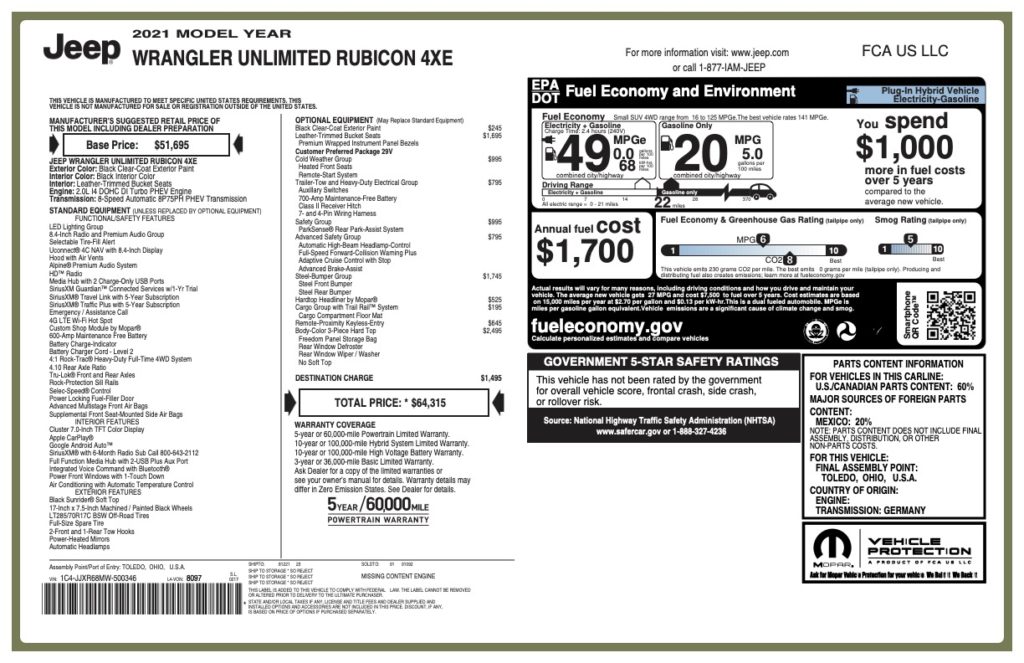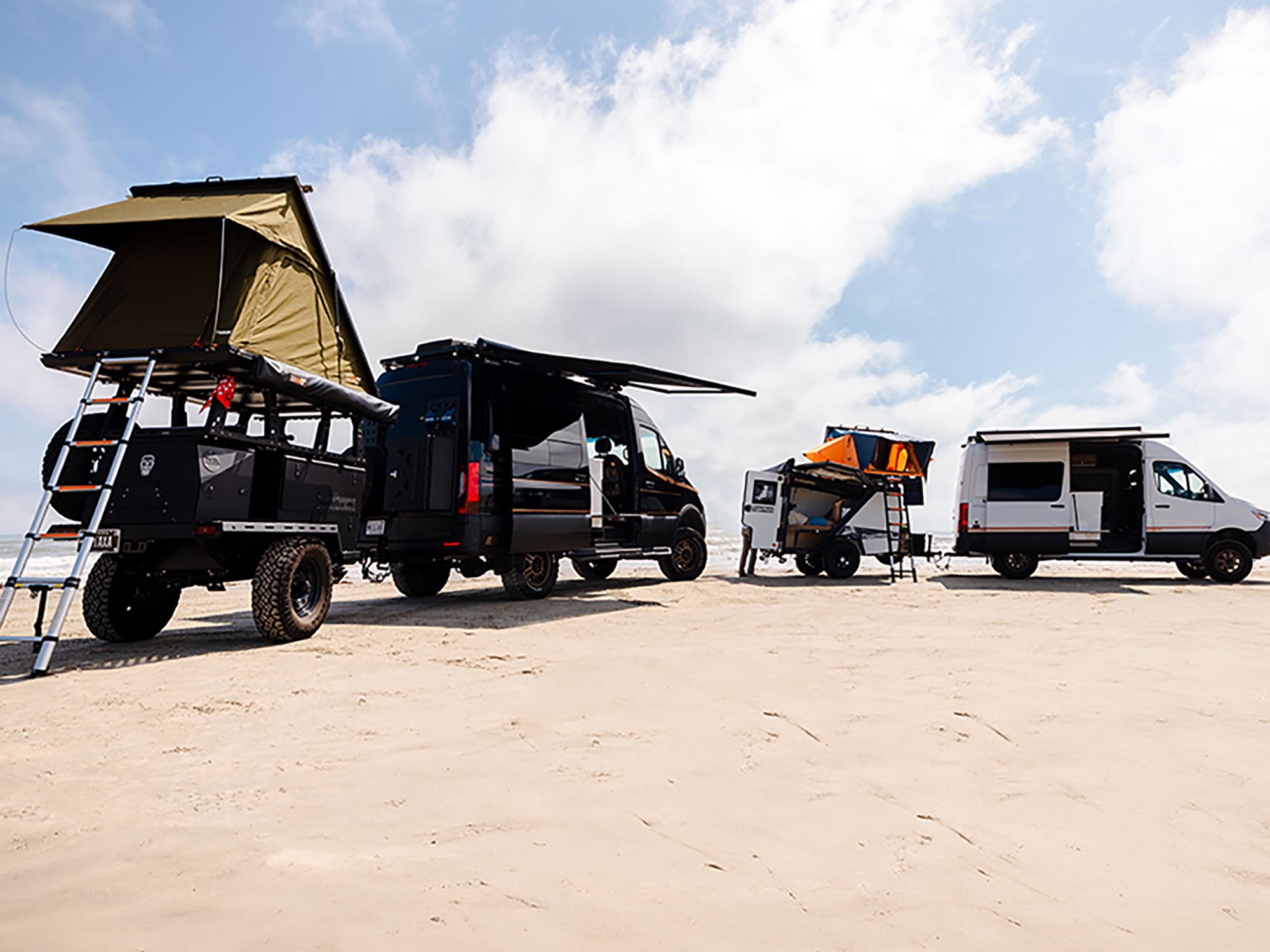This story originally appeared in the 2021 Overland Expo Sourcebook Magazine.
It was 77 degrees out. Nevertheless, right around the 5,300-foot elevation mark, the bone-dry trail turned into 12 or more inches of thick, wet snow. It was as if someone had drawn a line across the Gifford Pinchot National Park in Central Washington. Above this line, it was winter. Below it, summer.
Late spring snowpack can be slick and unforgiving. It’s not like the fluffy, tacky stuff of mid-winter. The snow that survives 80-degree late May sunshine is cut from a different cloth. It’s hardier, meaner. It’s not one to be pushed around. And if you want to get through it, you’re in for a fight.
Keen to test the Jeep Wrangler Rubicon 4xe (pronounced ‘four-by-E’) I was piloting, and to tempt fate a bit, I dropped the tire pressure down to 15 PSI, pulled the transfer case lever down from all-wheel drive (yes, it has AWD) into 4-Low, and throttled forward. Having depleted the battery charge earlier, the 4xe was in Hybrid mode, which utilized both the gas engine and the electric motor-generator for forward propulsion.
The tires slipped occasionally, but the 4xe churned through the hard-packed snow. Five hundred feet down the snowy track, I passed a handful of Tacomas and Tundras that lined the side of the trail. The drivers lifted their heads from shovel duty long enough to shoot exacerbated, jealous glances at me, as I rolled past in my electrified Wrangler.
I made it a good half mile into the snow — a quarter mile further than every other traveler that day — until the ruts got too deep for the 4xe. The front and rear differentials hung up on the hard-packed snow and I lost momentum. Even with the lockers on, the Wrangler was immovable.
Time to start digging.
Wrangler PHEV?
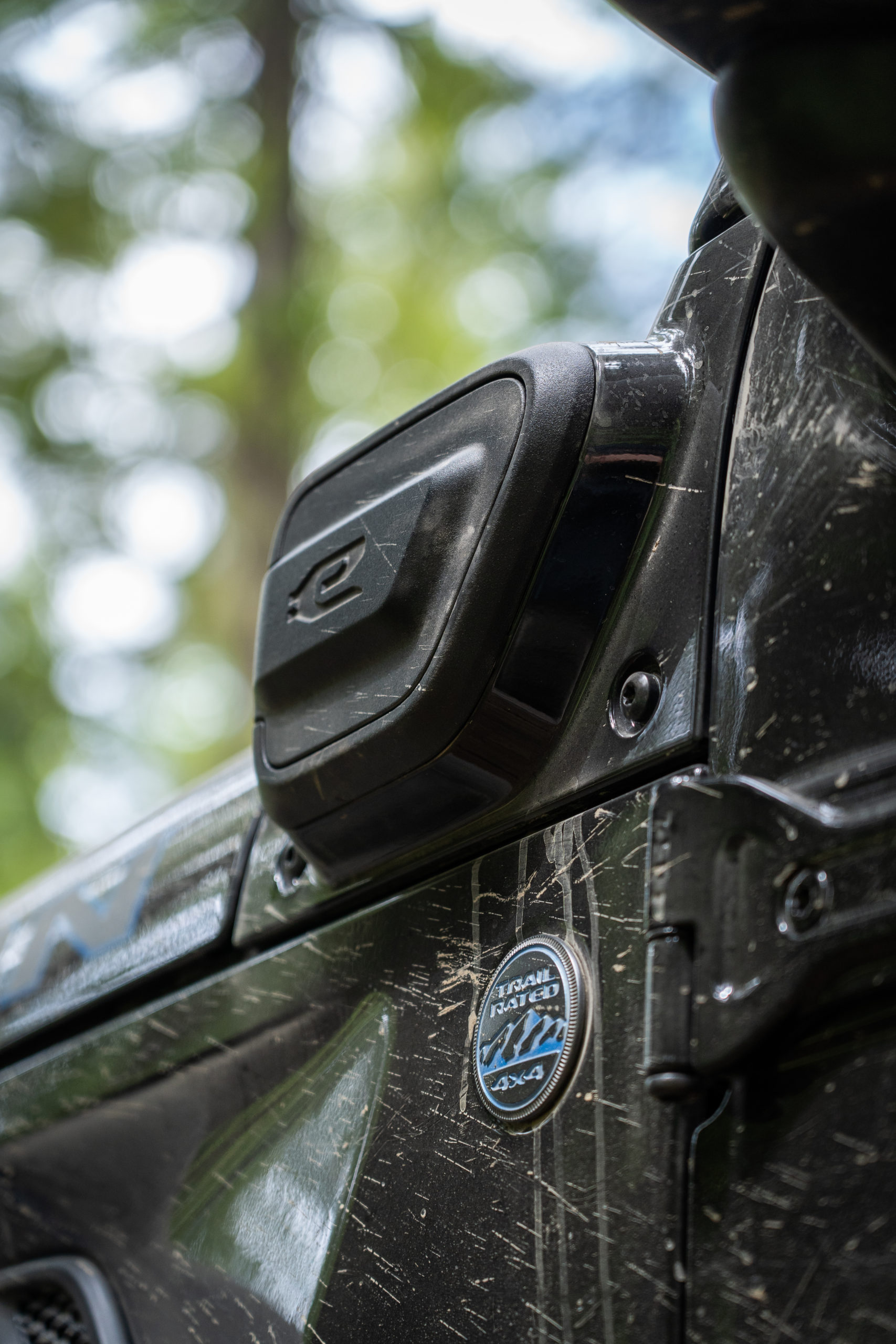
Photo by Nick Jaynes
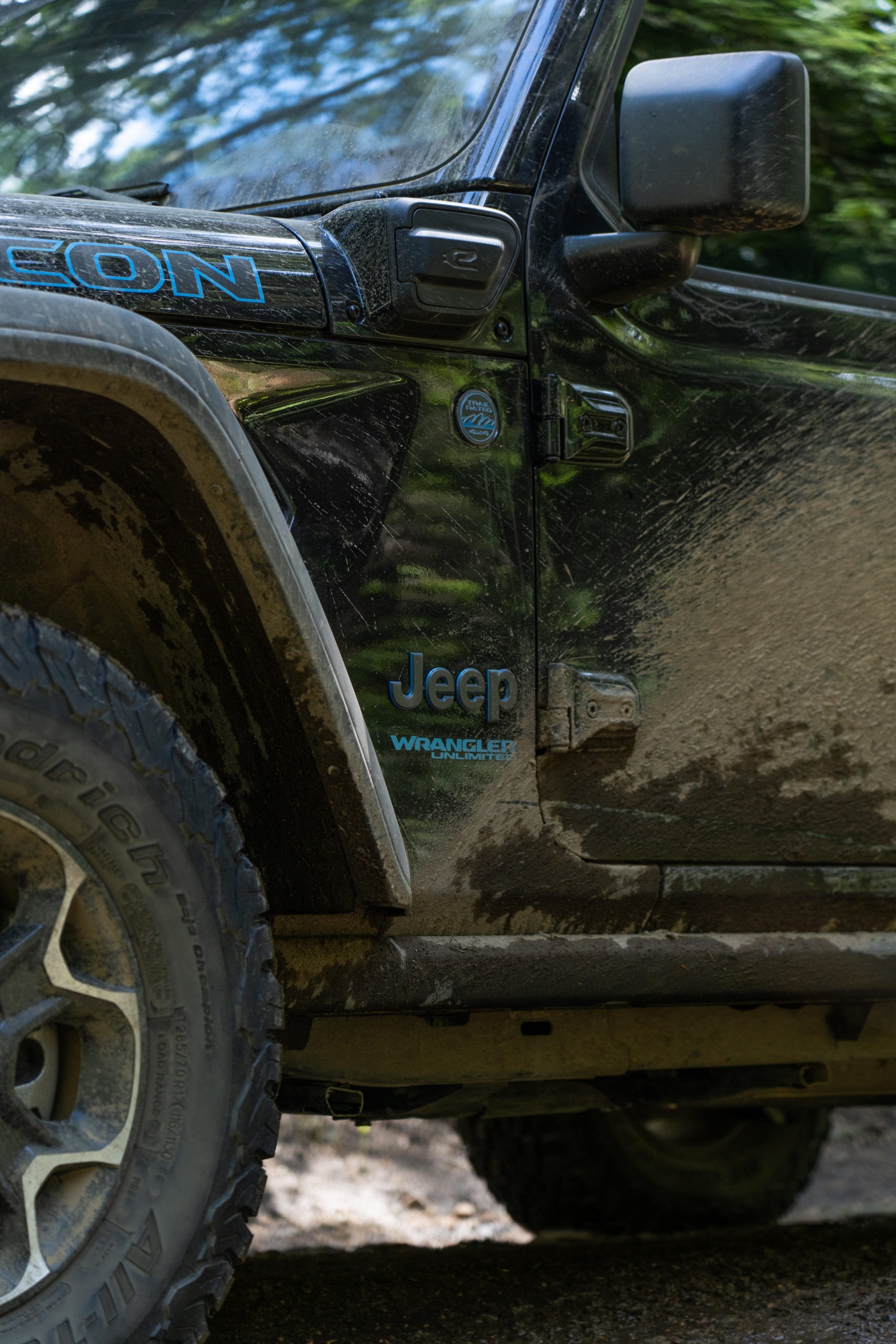
Photo by Nick Jaynes
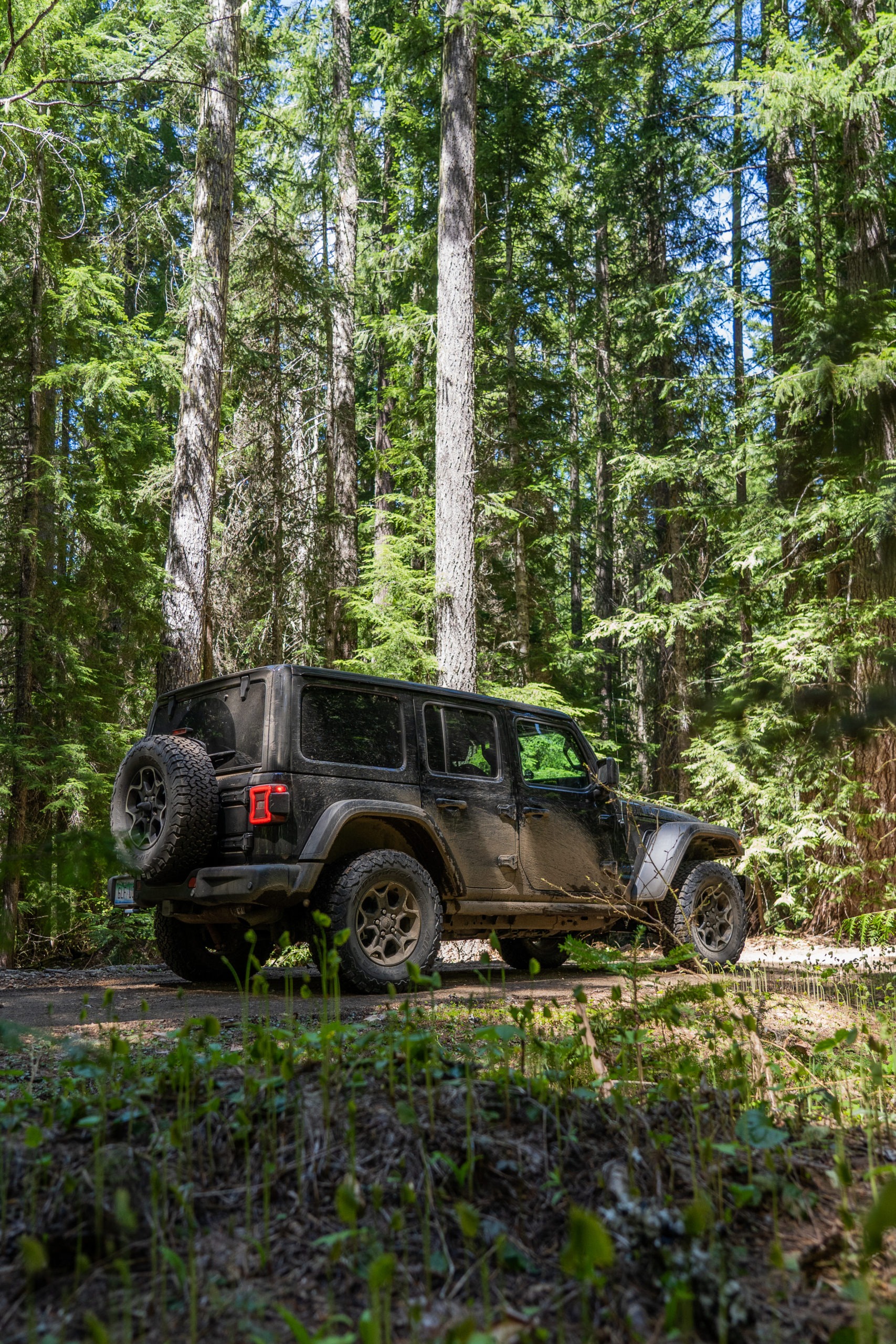
Photo by Nick Jaynes
I guess it was inevitable, but I never expected a plug-in hybrid (PHEV) Wrangler. I know the future of transportation is electric, including 4×4 trucks and SUVs. The battery-electric vehicles (BEV) like Rivians, HUMMER EVs, and Ford F-150 Lightning didn’t catch me off guard at all. They’re all incredibly cool trucks and I am ecstatic they will soon be whizzing along trails across the U.S. But the Wrangler PHEV surprised me.
Maybe it’s the rig’s solid axles or Stallantis’ (the newly formed auto conglomerate that includes Jeep) relatively slow adoption of electrification mixed with its obvious obsession with the Hellcat V8 that kept a Wrangler PHEV far from my mind. Regardless, this rig was a surprise — a delightful one at that.
The Wrangler 4xe is powered by a 2.0-liter turbocharged four-cylinder gasoline engine mated to an eight-speed automatic transmission that has an electric motor-generator integrated into it. A 400-volt battery pack that is discreetly mounted under the rear seats supplies electrons to the onboard motor-generator. And the transmission routes power to either the rear or all four wheels through a two-speed transfer case.
READ MORE: The Best Jeep for Overlanding
All told, the system puts out 375 horsepower and 470 foot-pounds of torque. That makes it the torquiest Wrangler variant, besting even the 442 foot-pounds put out by the EcoDiesel.
With the batteries fully charged, the 4xe can do 21 miles on pure-electric driving and 370 miles on a full battery and full tank of 87 octane gasoline. Recharging the battery pack takes around 12 hours on a 120-volt outlet but only two hours on a 240-volt Level II charger.
The 4xe can recharge its onboard batteries itself while driving down the road, too, with the ‘E Save’ mode. That means you can leave your house with a depleted battery and get to the trailhead with a battery full of electrons (distance dependent), ready to take on some pure-electric rock crawling.
Snow problem
With the 4xe well above its axles in snow, I broke out the shovel and the MAXTRAX and began digging. Well, I didn’t start digging. My buddy did.
I had back surgery five weeks ago. And my buddy Winslow volunteered to come on this four-day overlanding trip to help me out. Mostly, I think he wanted to drive my Gladiator while I drove the 4xe. As part of this arrangement, however, he agreed to do all the manual labor and heavy lifting on our journey. When I got the 4xe stuck, he reluctantly got to work. What a pal.
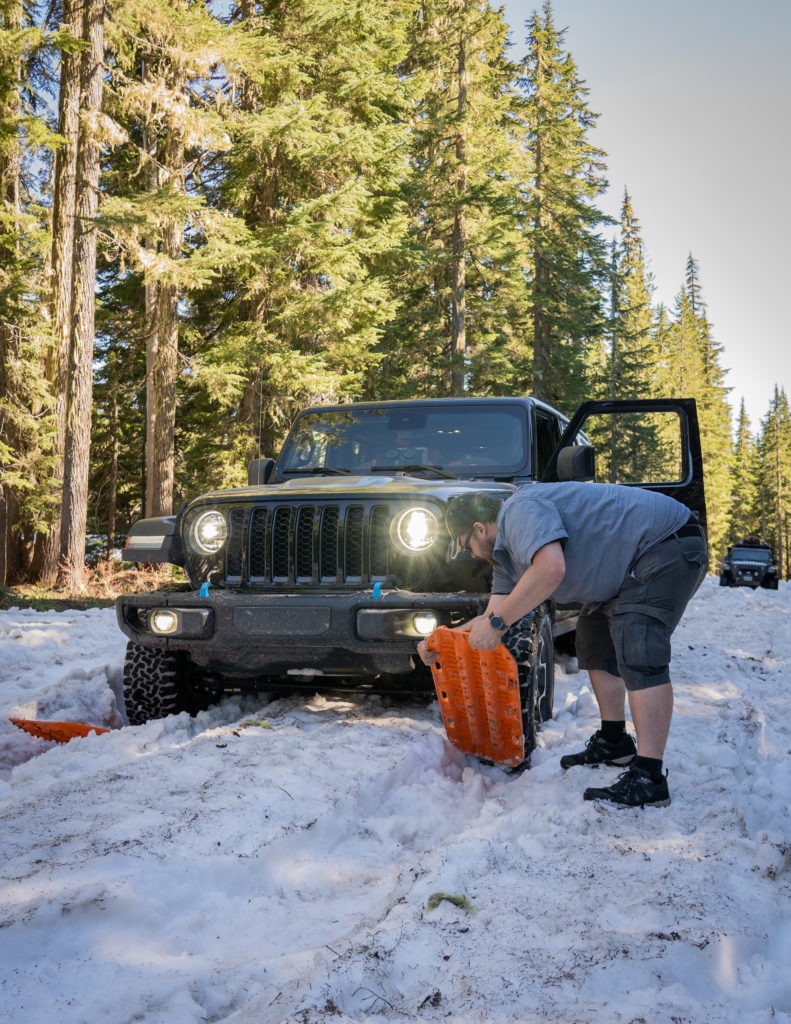
With snow cleared and MAXTRAX wedged under the leading edge of the tires, I attempted to extricate the Wrangler. However, it didn’t budge. My normal strategy for getting out of snow — bumping the throttle — wasn’t working. Curious as to why, I asked Winslow to hop in the driver’s seat so I could watch what the wheels were doing.
Rather than apply globs of torque to the wheels in little bursts, as I pumped the throttle, the wheels churned slowly and robotically — even long after the throttle had been released. It was almost as if the drivetrain had a mind of its own. Similarly, brake pedal response was delayed by a half second or more.
After 20 more minutes of futile digging and MAXTRAX placement and replacement, we yanked the 4xe out of the snow with my Gladiator; it only needed to go a few feet backward to regain traction. With traction restored, I turned the 4xe around and headed back down the trail to find another, less snowy route north.
Drive-by-wire
The image of the wheels churning on their own in the snow replayed in my head for the remainder of the trip. It forced me to think more about the technology driving the vehicle. Because it’s a complex hybrid system, there’s a lot going on.
The throttle and brake systems are actuated by wires, not physical linkages. This is commonplace in modern vehicles, especially hybrids. That’s because regenerative braking is utilized for slowing the vehicle before the friction brakes are engaged — at around the last few miles per hour.
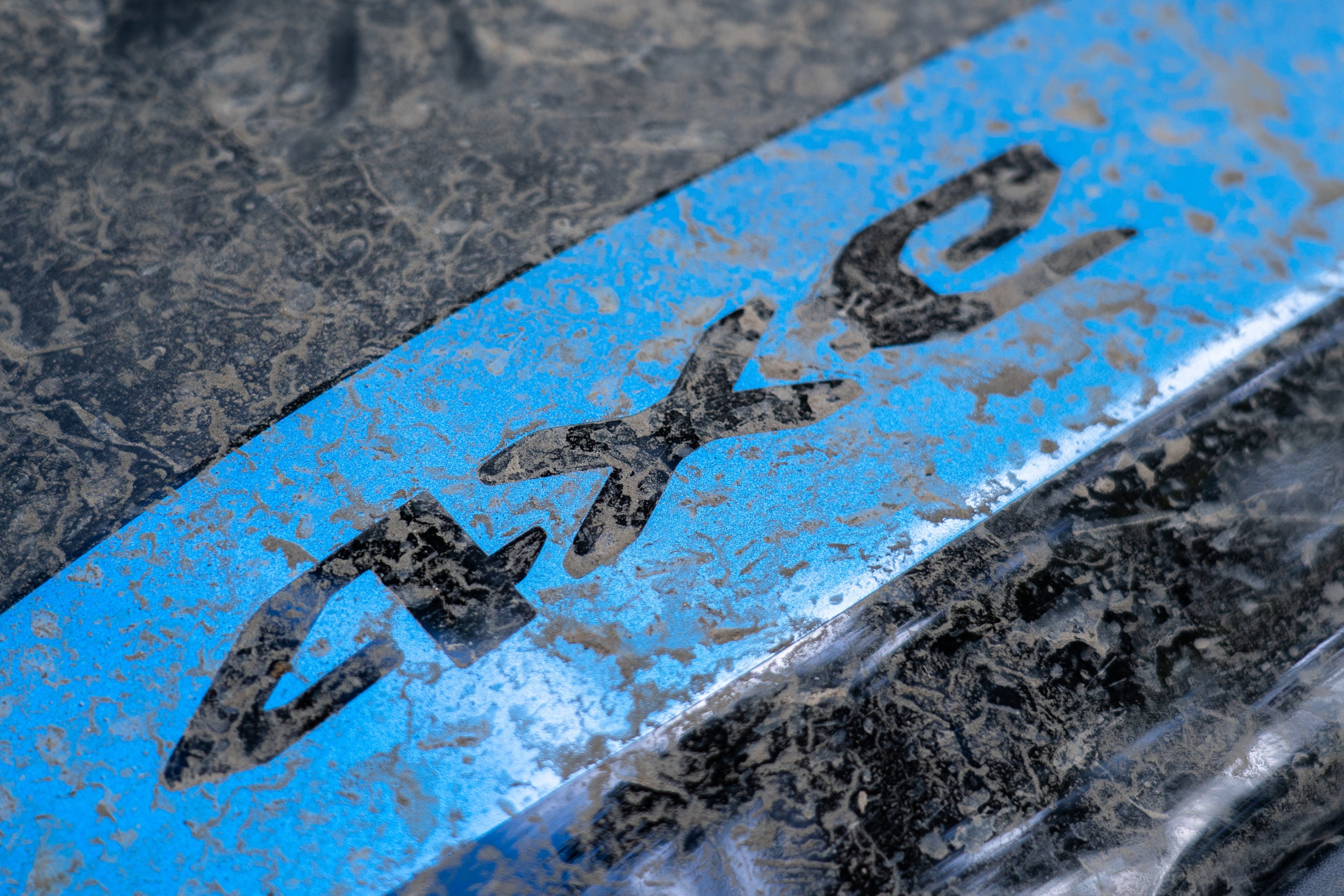
Photo by Nick Jaynes
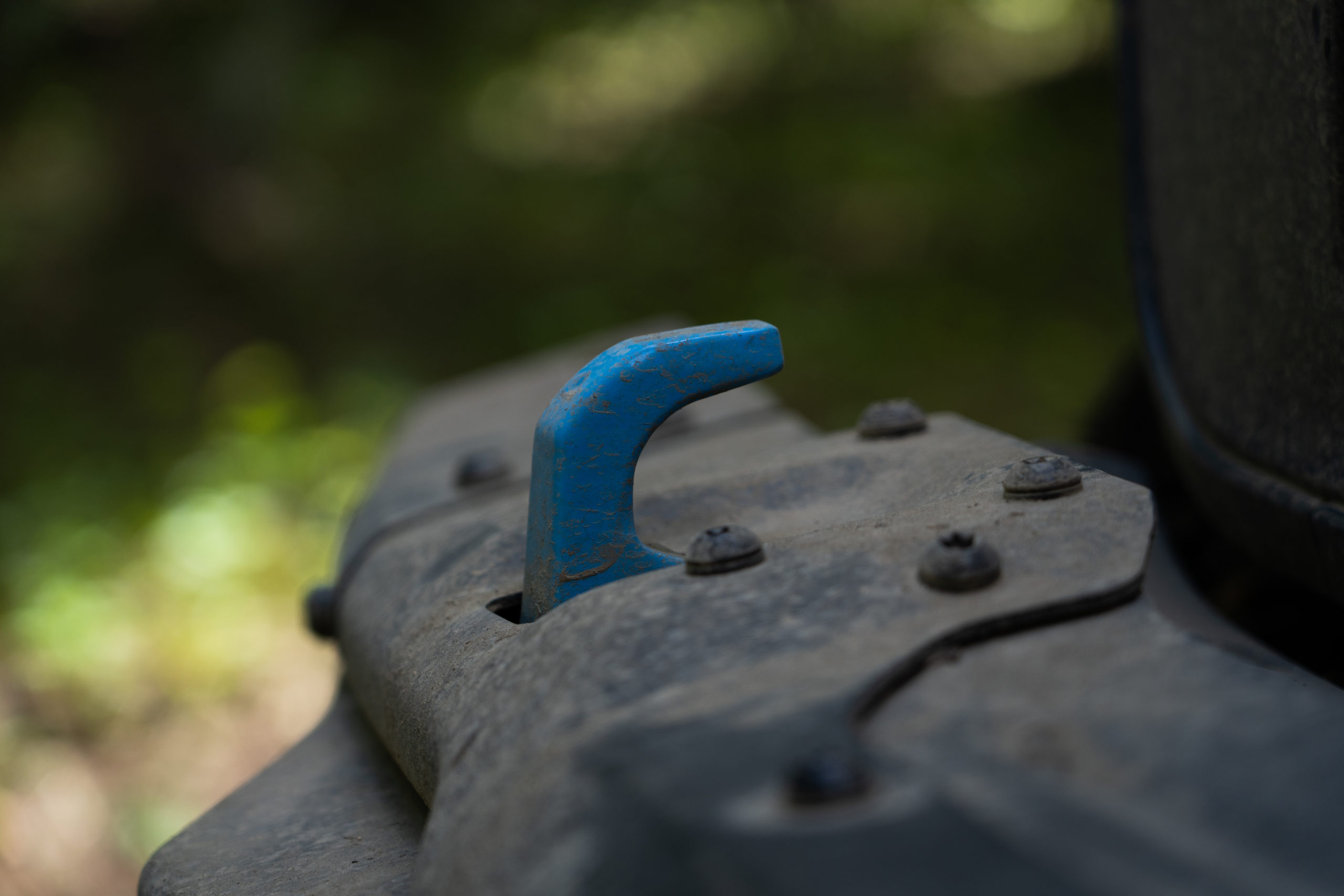
Photo by Nick Jaynes
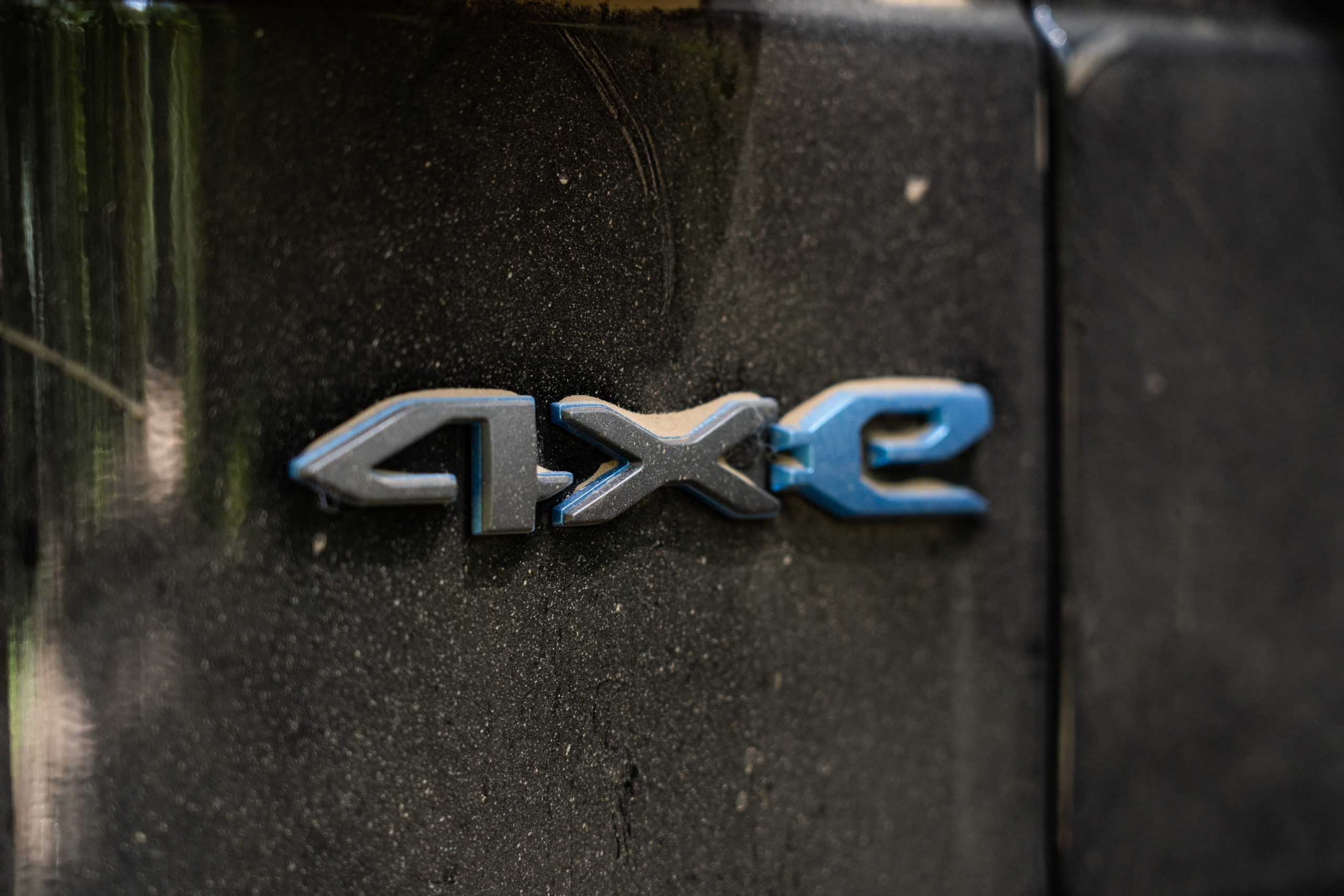
Photo by Nick Jaynes
There is also the turbocharger to consider. A turbo is great for adding high-RPM power to a smaller engine. But they need time to spool up, which they can’t do at low revs while trying to get unstuck. This leaves the engine in its lowest power band.
What’s more, the combined power of the gasoline engine and electric motor-generator have to be precisely doled out by the system. It’s a delicate dance between internal combustion and EV power going on beneath the vehicle.
READ MORE: 2021 Ford Ranger Review
Due to that constant shift in power source, there are lags. The throttle response isn’t always immediate. Similarly, the throttle input does not necessarily reflect the power output at the wheels. Similarly, braking response isn’t as direct. Stomp on the brakes and you’ll come to a stop, sure. But there is a noticeable gap between the end of regenerative braking and when the friction brakes take over.
These lags are not overtly noticeable on the highway or during regular urban driving (unless you really pay attention to it). You can easily adjust the way you drive a bit to accommodate the gaps and lags on the street, as any hybrid driver does. On the trail, in more high-stakes driving situations, the impreciseness — gaps between input and application — is worrisome.
The midpoint
Without an oldfangled internal combustion engine and automatic transmission in the mix, a BEV’s propulsion system can react with split-second immediacy. Electric motors can put out 100% of torque at zero revs and also deliver that torque with great precision and with lightning speed. For example, electric motors can switch from putting out positive and negative torque in a millisecond.
This is just one of the reasons why I am so excited about BEVs as overland trail rigs.
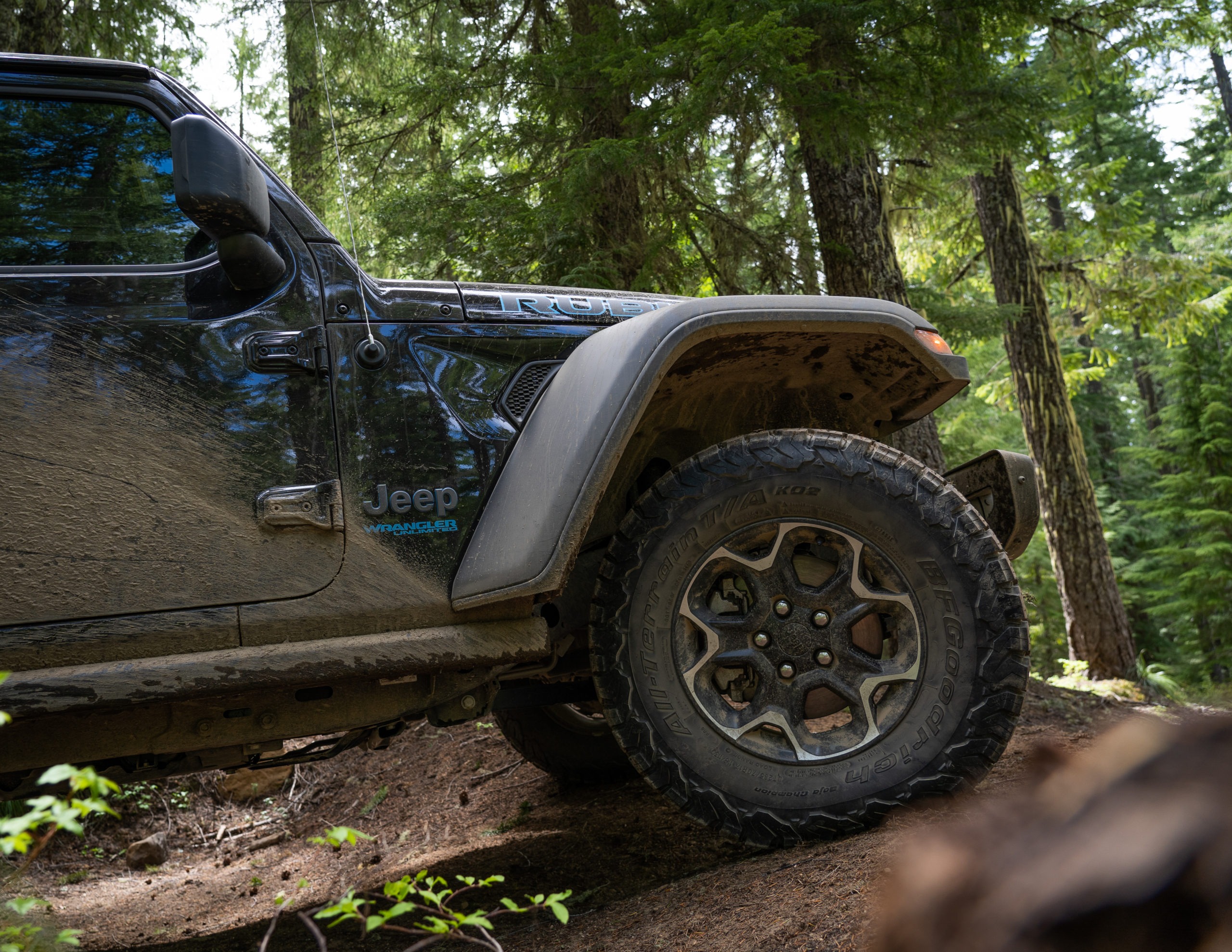
Photo by Nick Jaynes
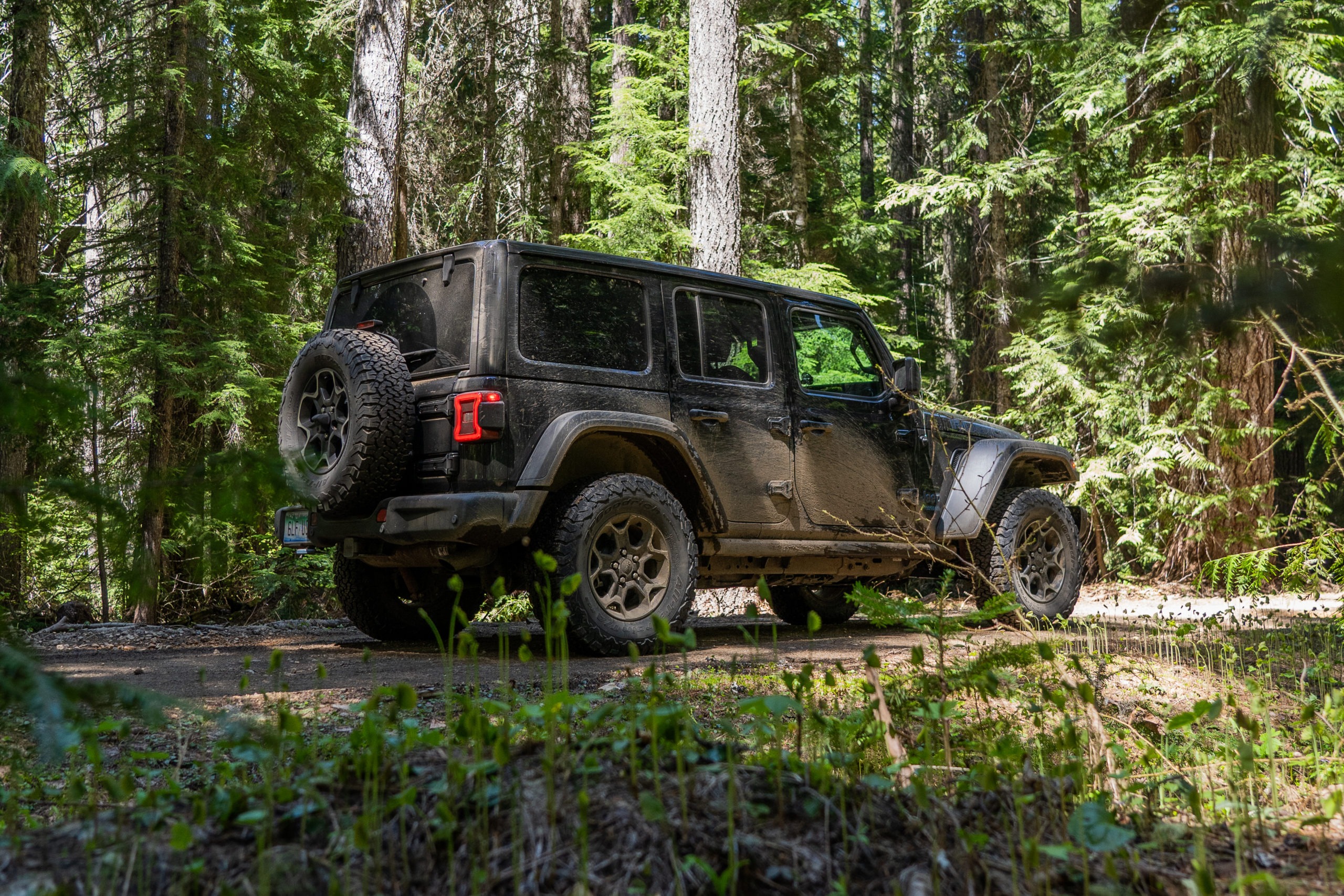
Photo by Nick Jaynes
The benefits BEVs stand to offer us overlanders abound, from increased capability and torque to versatile onboard power to eco-friendliness. But just as the 4xe’s powertrain lags, so too does EV charging infrastructure lag BEV development.
Jeep and Rivian have publicly said they plan to install EV chargers at trailheads. Few have been constructed yet. Those that have been installed so far aren’t yet numerous enough to be meaningful for a handful of overlanders let alone the majority of us.
It’s with this limited charging infrastructure reality in mind that the Jeep Wrangler 4xe shines most brightly. It offers many of the benefits of a BEV without suffering the insult of a lackluster charging system. You can recharge the 4xe’s batteries at a charging station or with its onboard gas engine. When the electrons run out, gasoline takes over entirely.
Is the Wrangler Rubicon 4xe without its faults? Absolutely not. But it’s still a brilliant vehicle. More than that, it’s a rarified midpoint between pure-electric and internal combustion.
Until America’s charging infrastructure is fully prepared to power an electrified fleet, the 4xe stands alone as the only true plug-in hybrid 4×4 on the market today. And for that reason alone, it deserves your respect and adoration.
What to know:
- Base price: $51,695
- Optional extras:
- Black Clear-Coat Exterior Paint
- Leather-Trimmed Bucket Seats
- Customer Preferred Package 29V
- Power output: 270 horsepower, 310 foot-pounds (2.3-liter EcoBoost)
- Fuel economy:
- 49 mpge
- 20 combined
- 21 miles of pure-electric range
- Price as tested: $64,315
